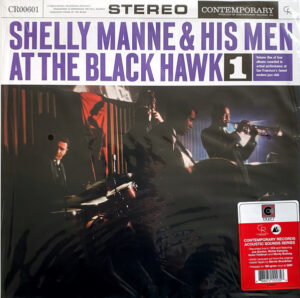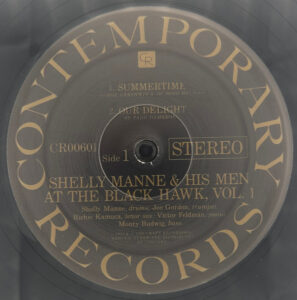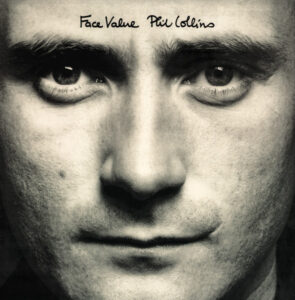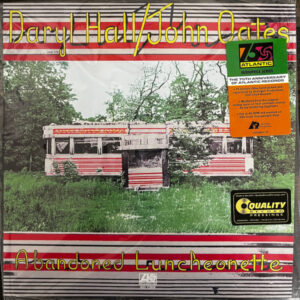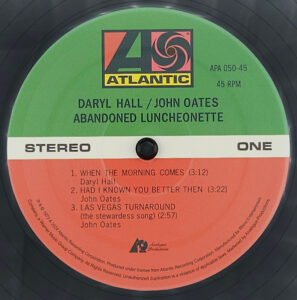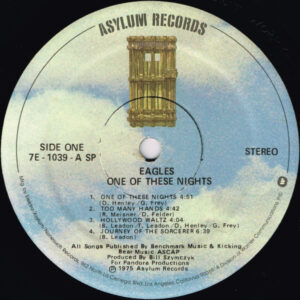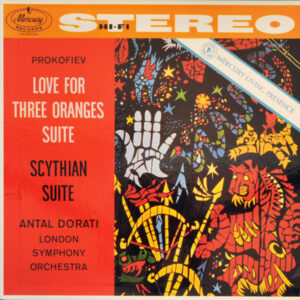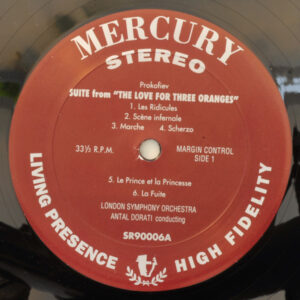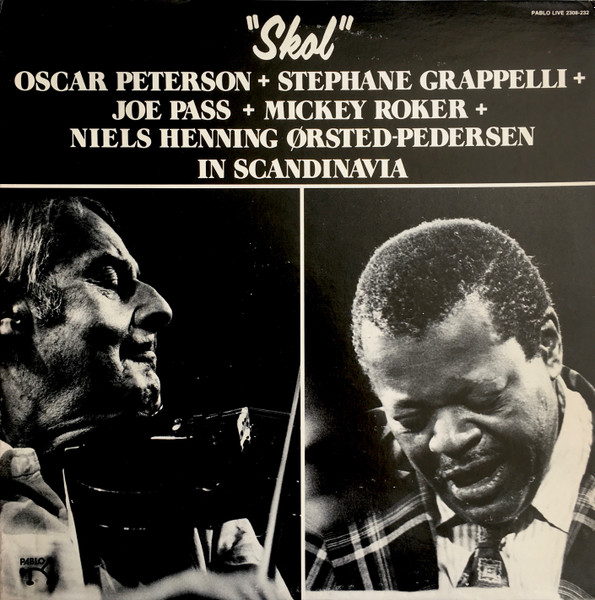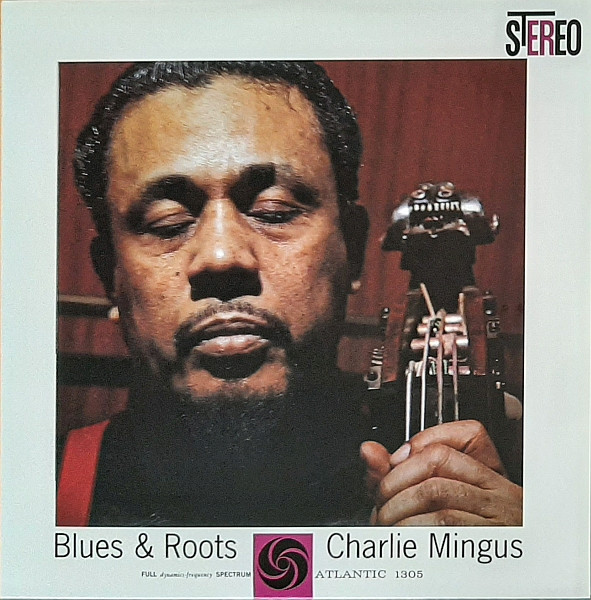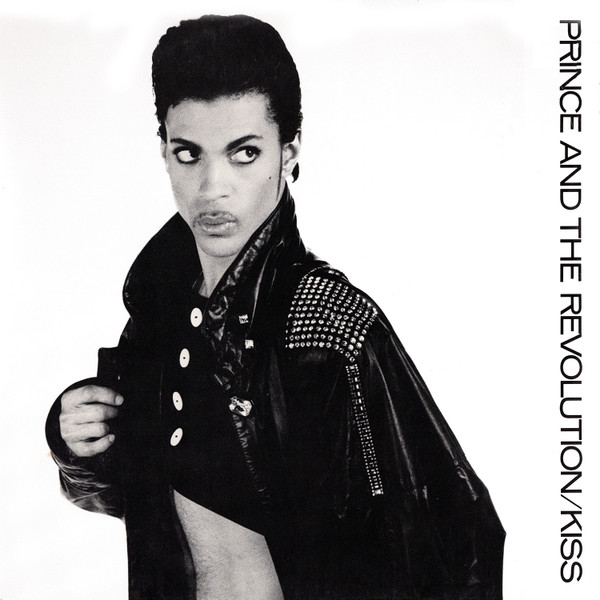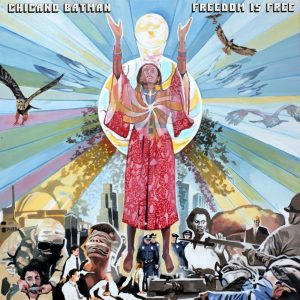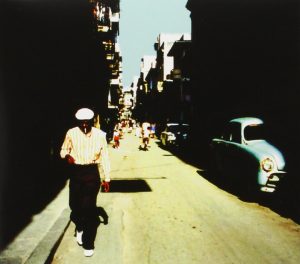This is an ongoing project by Claude Lemaire of Soundevaluations
241. Shelly Manne & His Men – At the Blackhawk Vol.1. Contemporary Records – S 7577 (1960), Craft Recordings – CR00601 (2024), Acoustic Sounds Series, 33 1/3 rpm. Genre: hard bop, cool jazz.
As the title suggest, this is the first of four volumes of drummer Shelly Manne and his men—Joe Gordon on trumpet, Richie Kamuca on tenor sax, Victor Feldman on piano, and Monty Budwig on bass—recorded live at the Blackhawk in San Francisco, California in September 1959. They start out with the Gershwin jazz standard "Summertime" taking up half of side A. Throughout the five tracks, the background chatter stays very discreet, contributing to a very intimate live ambiance setting, letting the musicians deliver top rank exciting performances. As expected from Contemporary Records—even though Howard Holzer is credited as the engineer instead of the usual presence of Roy DuNann—the sound is top notch, with instruments widely-panned plus commanding convincing presence. Too bad I don't have an original pressing which I'm sure is superb, but this reissue by Craft Recordings done by Bernie Grundman is quite impressive, and a worthy alternative.
242. Phil Collins – Face Value. Virgin – V2185 (UK), (1981), 33 1/3 rpm, Analogue Productions – APA 003-45 (2023), Atlantic SD 16029, Atlantic 75 Audiophile Series, (2x45 rpm). Genre: art rock, experimental pop rock, funk, blue-eyed soul, delta blues, country, jazz influences.
Preferring hearing him teamed up with Gabriel in Genesis, I was never a big fan of Phil Collins flying solo, but his 1981 debut Face Value validates itself as his best album in my opinion. And now thanks to Analogue Productions reissuing it for the first time in a double-45 rpm format for the Atlantic 75 Audiophile Series, I have rediscovered a deeper appreciation for it, due to its incredible sound skillfully recaptured by cutting engineer Chris Bellman. Truth be told, this is not an album jam-packed with hits. Apart from "I missed again" gaining mild success, it is of course the opening track, "In the Air Tonight," driving the sale of the album, as well as its continued appeal, boosted by its historic visual placement in Miami Vice's very first episode back in September 1984. The EWF Horns aka the Phenix Horns—usually an integral part of 1970s stalwarts Earth, Wind & Fire—funkify certain songs on the album, further distancing himself from his past progressive roots. Hugh Padgham (co)produced and engineered the recording featuring its iconic thunderous drum break. Sessions were done at Collins' home "Old Croft" in Shalford Surrey, Town House in London, and the Village Recorder in L.A. The album's twelve tracks cover many music styles including influences from art rock, experimental pop rock, funk, blue-eyed soul, delta blues, country, and jazz
243. Daryl Hall & John Oates – Abandoned Luncheonette. Atlantic – SD 7269, (1973), 33 1/3 rpm, Analogue Productions – APA 050-45A (2024), Atlantic 75 Audiophile Series, (2x45 rpm). Genre: pop rock, blue-eyed soul, art rock, jazz rock.
I find that the famed Philadelphia duo also fit in a similar situation as Phil Collins described above. In the sense that I don't consider myself a fan of the bulk of their material, but I always had a soft spot for one of their earliest songs: "She's Gone"—which I strongly suspect that 10cc seems to have used as inspiration on their huge hit "I'm Not in Love" two years later. And just like Face Value, there are no other hits among the eight remaining tracks. "She's Gone" gained a new lease of life nearly three years later when Atlantic reissued the single–by then Hall & Oates had switched labels to RCA, with "Rich Girl" soon hitting the summer airwaves. But back to this recent reissue from Analogue Productions honoring the Atlantic 75 Audiophile Series. Music wise, the rest of the album is fairly good but "She's Gone" definitely steals the show. Sonically, it is devilishly jaw-dropping! Never owning the original album, I was used to hearing it play on the AM and FM dial, making the sound improvement contrast even bigger. Producer Arif Martin and engineers Gene Paul, Jimmy Douglas, Lew Hahn, Chris Bond, and Ryan K. Smith did an outstanding job, giving it a deep bass, warm tone, wide soundstage, floating intertwining vocals, very analog sound, and great sax solo contribution by legendary 'Return to Forever's Joe Farrell.
244. Eagles – One of These Nights. Asylum Records – AS 53014 or 7E-1039 (1975), 33 1/3 rpm, Mobile Fidelity Sound Lab – UD1S 2-027, (2022), (2x45 rpm). Genre: soft rock, country rock, folk rock, soulful disco.
Keeping on this theme of mine of "one song carrying the entire album"; the Eagles' fourth album One of These Nights falls into this category. True it does feature two other charting singles—"Take It to the Limit" and "Lyin' Eyes"—but being more of a disco fan than a country fan, the title track and the superb sound of this release is the justification for its inclusion in this list. Among a dozen MoFi UD1S in my collection, it is the only Eagles album I have coming from MoFi's "Ultradisc 'one step' releases, and can confirm, it is up there with the very best of them. Working from the 1/4 inch/15 IPS analog master tape converted to DSD 256, engineer Krieg Wunderlich got the tonal balance, dynamics, and soundstage spot on, fittingly for a mid-1970s 24-track recording. Bill Szymczyk produced and engineered the album assisted by engineers Allan Blazek, Michael Braunstein, Ed Marshal, Michael Verdick, and Don Wood in 1974 and 1975 at Criteria in Miami, and the Record Plant in Los Angeles. RTI's pressing was perfect. For more detailed info, go to http://soundevaluations.blogspot.com/.
245. Prokofiev, Antal Dorati, London Symphony Orchestra – The Love for Three Oranges Suite / Scythian Suite. Mercury – SR90006, Mercury Living Presence (1957-58), 33 1/3 rpm, Classic Records – SR-90006 (2010), 33 1/3 rpm, 200g. Genre: classical, modern.
The Russian composer conducted the premiere of L'amour des trois oranges, Op.33 in 1921 at the very end of the year. By then, Prokofiev had left his native country to escape the Bolshevik Revolution, and was living in the United States. Cacophonous, abrasive, and percussive at times, it reflects the modern style of classical music common for that period. Originally composed as a satirical opera, here it is the six-movement instrumental orchestral suite by the London Symphony Orchestra conducted by the great Antal Dorati. Side two features the four movement Scythian Suite, Op. 20, originally conceived for the ballet Ala i Lolli but ultimately dropped by Diaghilev. This is one of the first stereo title releases by Mercury, most probably in early 1958 as it was recorded in July 1957 at Watford Town Hall in London. Brilliantly engineered by Clarence Robert Fine, and directed and produced by his wife Wilma Cozart Fine. Bernie Grundman did a superb remastering and cutting, capturing the huge dynamic range and soundstage of the original tape. This is among the top Mercury recordings and Classic Records reissues ever produced. There is also a four single-sided 45 rpm release by Classic Records which I never heard, and theoretically could surpass this single 33 1/3 rpm version.
For more from Claude Lemaire go to his blog...
http://soundevaluations.blogspot.ca/




